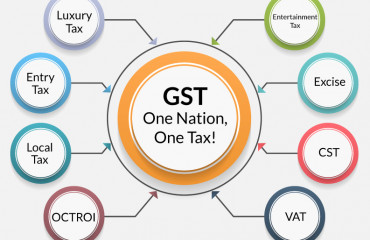
BENGALURU : The government will likely narrow its fiscal deficit to 5.9% of GDP in 2023-24 from 6.4% estimated for the current fiscal, “fully funded" by subsidy cuts, Goldman Sachs estimated in its fiscal outlook report on Tuesday.
BENGALURU : The government will likely narrow its fiscal deficit to 5.9% of GDP in 2023-24 from 6.4% estimated for the current fiscal, "fully funded" by subsidy cuts, Goldman Sachs estimated in its fiscal outlook report on Tuesday.
It emphasized the need for India to return to the path of fiscal consolidation to ensure macroeconomic stability and cautioned that higher government borrowing can take up bond yields and increase funding costs for corporates.
The government aims to the lower fiscal deficit to 4.5% of GDP by 2025-26.
"We estimate the central government will consolidate the fiscal deficit by 50bp to 5.9% in FY24 fully funded by a reduction in subsidy spending while maintaining capex and other current spending...One of the key pillars of India's macro stability was the gradual reduction in fiscal deficit, which also helped in reducing the current account deficit, helping in the disinflationary process, and keeping the Indian Rupee stable. It is important to go back to the path of fiscal consolidation, in our view," Goldman Sachs said in the report titled 'India's fiscal outlook: FY24 budget to balance spending priorities and fiscal prudence.'
It added that as the domestic investment cycle picks up, and the current account deficit remains wide, higher government borrowing can increase bond yields and funding costs for corporates.
It said the government would be able to meet the FY23 fiscal deficit target of 6.4% of GDP only after some spending cuts, given incremental subsidy spending in the fiscal year following the commodity shock.
The government last month got parliamentary approval for gross additional expenditure of ₹4.36 trillion toward fertiliser and food subsidies, payments to oil marketing companies for domestic LPG operations, and funding the Mahatma Gandhi National Rural Employment Guarantee Scheme. Of this, the net cash outgo aggregates to ₹3.26 trillion, with savings on account of higher receipts totalling ₹1.1 trillion.
Goldman Sachs outlined three broad spending priorities for the government next year—capex, subsidies and welfare spending— and said it expects the government to continue with capex allocation at 2.9% of GDP in FY24, which would imply an 11% year-on-year growth compared to its revised estimate for FY23.
However, as against higher than expected subsidy spending in FY23 due to geopolitical economic shocks, Goldman Sachs expects the fertilizer subsidy in FY24 to return to the pre-pandemic average of 0.5% of GDP.
"We expect the government to continue with the cooking fuel subsidy program (Ujwala Yojna) and expect fuel subsidies to remain at 0.1% of GDP. We thus expect spending on subsidies as a share of GDP to fall to 1.5% (from our estimate of 2.1% in FY23)," it said.Besides, it flagged that given the general elections scheduled to take place in 2024, the government is expected to increase rural and welfare spending as seen in pre-election budgets in FY09, FY14 and FY19.
"In FY24, we expect current expenditure (excluding interest and subsidy) to be at 7.3% of GDP. Rural employment and housing are likely to be in focus," said the report.
Assuming a nominal GDP growth forecast of 11% year on year in 2023-24, Goldman Sachs expects income tax and corporate tax revenue to grow by 12% each and a 14% growth in goods and services tax.
It added that assuming windfall taxes on export of petrol or diesel and on domestic crude production are not continued into FY24 on the back of a decline in crude oil prices, it expects excise duty collections to fall to 1% of GDP (from an estimated 1.1% of GDP in FY23).
Besides, it pointed out that the government is likely to set a modest target for disinvestment in FY24.
